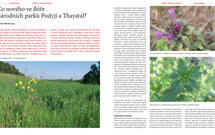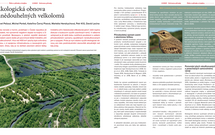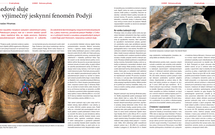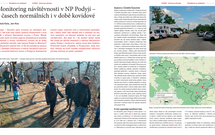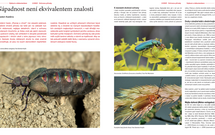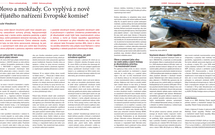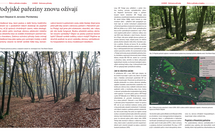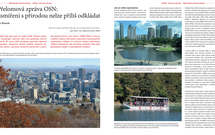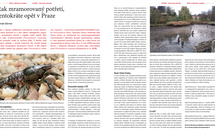Nature Conservation 4/2008 — 19. 8. 2008 — Research, Surveys and Data Management
Minerals of the Chýnov Cave and Pacov Hill

Pacov Hill in the Tábor region (southern Bohemia) is an important mineralogical site of the supra-regional importance. In past, crystal limestone used for lime production was extracted there.
Due to the extraction, the Chýnov Cave was discovered on the southern foothill of the hill in 1863. During the last 15 years, detailed mineralogical research was carried out at both the sites: it confirmed high diversity of mineral parageneses and found the occurrence of rare minerals there. In total, 62 minerals have been known from a quarry on Pacov Hill and from the Chýnov Cave. In permanently flooded parts of the Chýnov Cave, palygorskyte, chalcedone and particularly crystal limestone plates, on which scheelite aggregates occur, have been excised by unique karst process. The Chýnov cave is the only site outside North America where the violet variety of the tremolite, called hexagonite can be found. Other mi-neral forms newly found there include aggregates of the diopside and tremolite and microclines. In the 1970s, the aluminium rich pargasite and dravite were described from the quarry on Pacov Hill. Recently, mi-nerals of the Alpine paragenesis in amphibolites have been found in the quarry. The most remarkable findings include garnets incl. grosular and andradite, epidote, titanite, fluorite and prehnite. Among zeolites, particularly stilbite, laumonite, skolecite and heulandite should be mentioned. From an aesthetical point of view, arsenopyrite samples from Pacov Hill are probably among the best ones found in the Czech Republic. In addition to finding huge amount of minerals, a cross-section of the rock rich Moldanubicum group has been preserved in the eastern wall of the quarry. Taking account the above facts, Pacov Hill was declared a Nature Reserve in 2002.
Název připojené galerie
Quisque egestas velit non nulla fermentum, aliquet pharetra nunc malesuada. Nullam molestie vel diam non tincidunt. Sed pulvinar lacinia nunc et consectetur. Duis varius leo ac ex scelerisque, ullamcorper eleifend massa consectetur. Nullam in metus ac arcu pellentesque venenatis ac id lorem. Nulla nec ipsum sed enim sodales blandit a sit amet ex.


